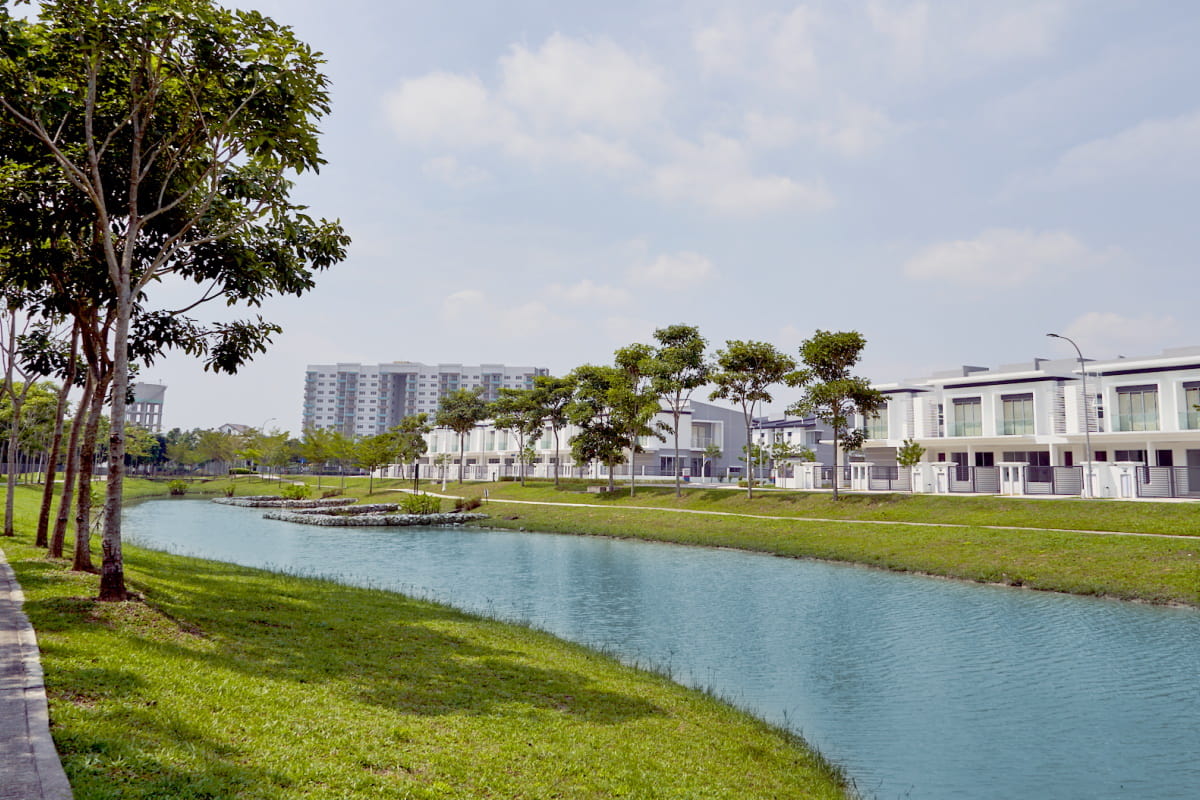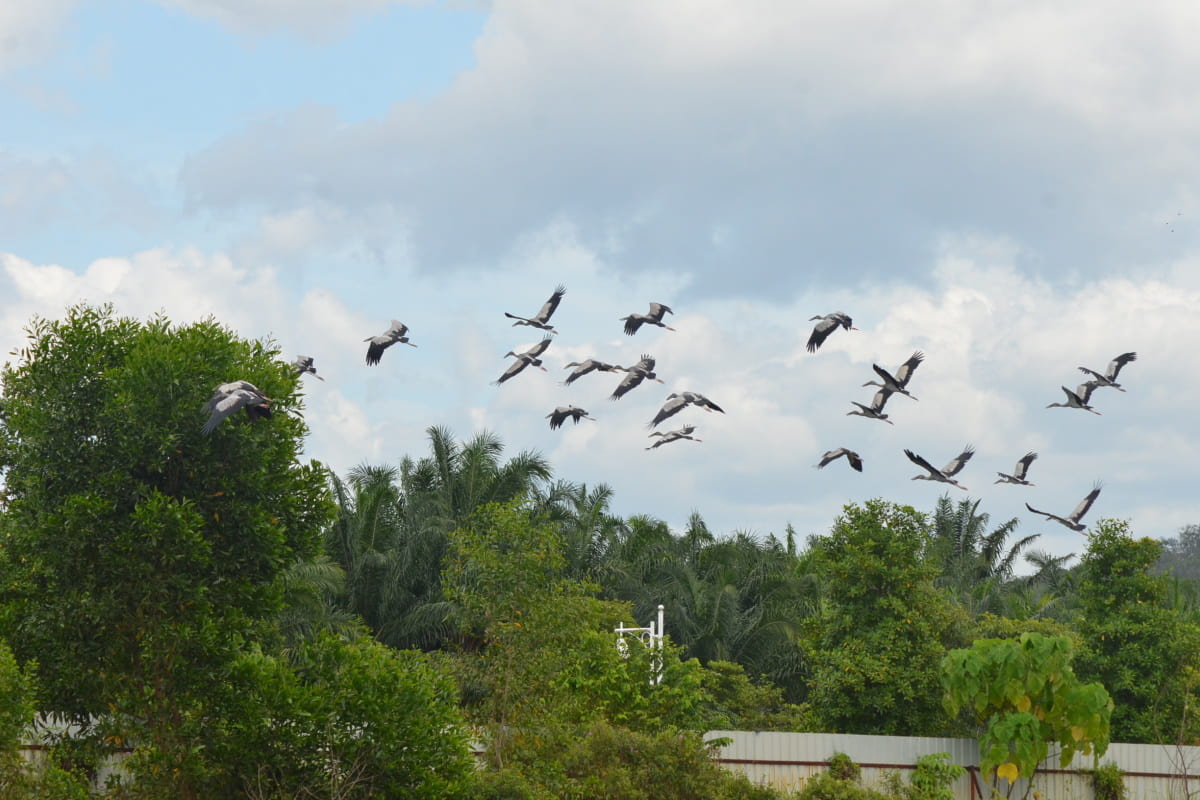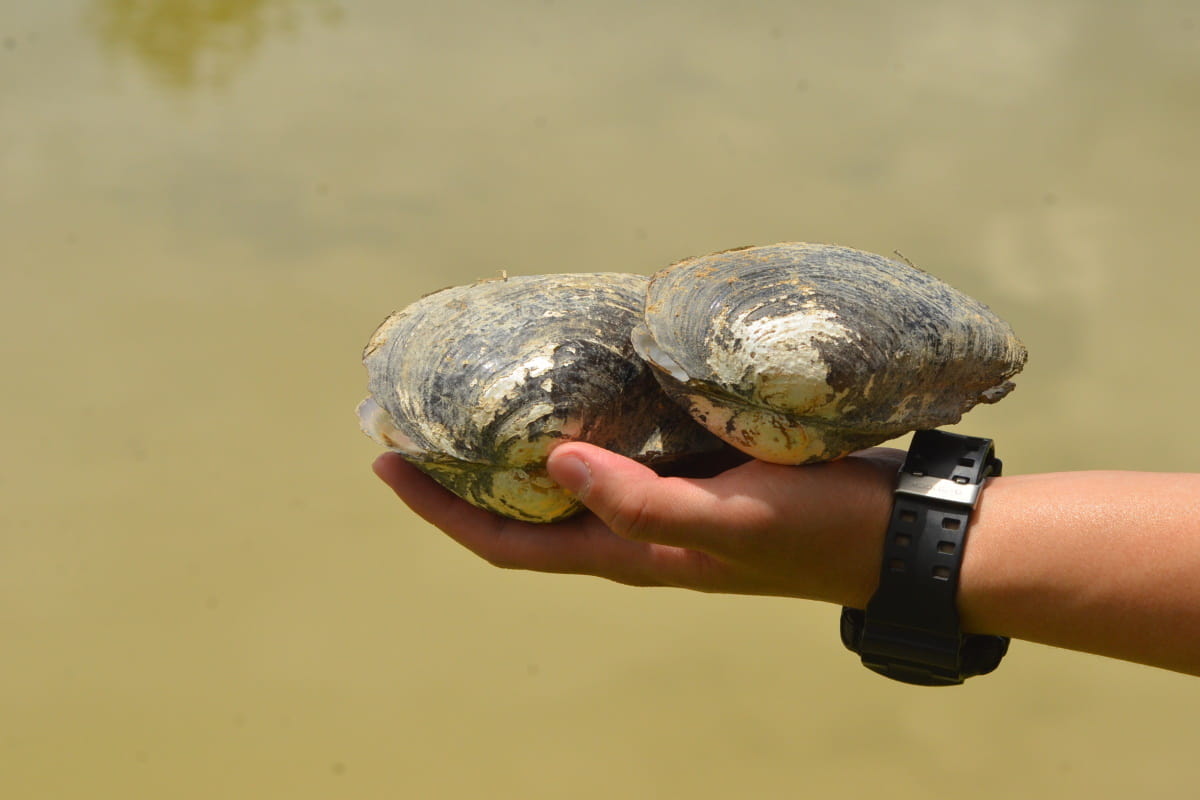
At Kundang Estates, the key organising elements are the beautiful lakes and picturesque landscape. The interconnected parks need to be by the water, and having an inviting and unique park creates a sense of place that we want for our town. All with the aim of promoting indoor and outdoor livability. It’s really about mindful planning and to be able to work with nature. Everything you see began with the belief of listening to the land. This has always been the guiding principle for us in creating a sustainable environment. Where biodiversity can blossom, we can co-exist with the environment.

A colony of Asian Openbill Stork (Anastomus oscitans) was sighted at Kundang Estates Lakeside Gardens in January 2020. The Asian Openbill Stork (Anastomus oscitans) is a large wading bird in the stork family of Ciconiidae. It is a resident breeder in tropical southern Asia from India and Sri Lanka east to Southeast Asia. They are broad-winged soaring birds, which relies on moving between thermals of hot air for sustained flight. Like all storks, it flies with its neck outstretched. It is relatively small for a stork at 68 cm length. They breed near inland wetlands and build stick nest in trees, typically laying 2 – 6 eggs. Nests are built on tree branches which are usually 15 to 60 ft above the ground.

The Asian Openbill Stork, like most of its relatives, walks slowly and steadily on the ground, feeding on fish, mollusks, frogs and large insects. In Kundang Estates, it seems to be enjoying a feast of Chinese Pond Mussles (Sinanodonta woodiana). Appearing in a large number, food is readily available. Due to this, the Asian Openbills have decided to congregate here at our wetlands and started nesting.

Chinese Pond Mussles (Sinanodonta woodiana) is a species of East Asian unionid mussel, primarily from the Amur River and Yangtze rivers. The Chinese pond mussel can reach sizes of up to 30 cm and an age of 12 – 14 years. Yet, they can reproduce in their first year while only 3 – 4 cm in size. This mussel is a benthic filter-feeder that prefers soft-bottomed freshwater habitats and has successfully spread into both tropical and temperate water bodies outside its natural Southeast Asian range. Mussels feed by filtering algae, bacteria, phytoplankton and other small particles out of the water column. They are in turn preyed upon by fish, reptiles, amphibians, birds and mammals.


